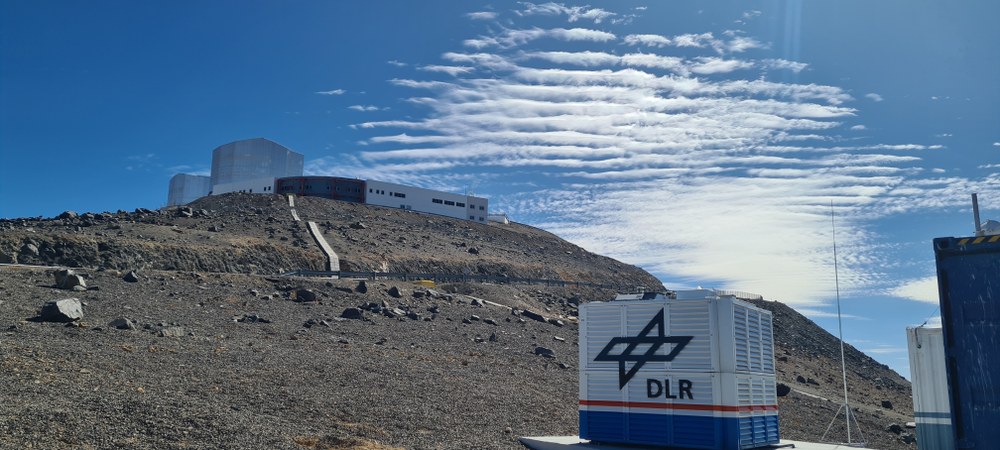OASIS
OASIS (Observations of Airglow with Spectrometer and Imager Systems) is a measurement system composed of multiple instruments for observations of the atmospheric airglow emission in the middle atmosphere at ca. 86 km altitude and is located at the Paranal Observatory of the European Southern Observatory (ESO). Airglow can be used to characterise atmospheric dynamics at this otherwise for observations almost inaccessible altitude layer. This layer is marked by diverse wave phenomena, like planetary waves, gravity waves and also infrasound, which are initiated in a variety of sources including global wind systems, storms and earthquakes.

Infrasound, for example, is initiated by earthquakes. Especially in Chile, which is located near two tectonic plate borders, earthquakes and seaquakes frequently occur. This pilot project accordingly has the goal of testing the capability to detect and characterize seaquakes in airglow, and particularly the tsunami that they can potentially trigger early on. If successful, this could be another element in providing early warning of tsunamis, since it is often difficult to determine whether a seaquake has also generated a tsunami, or not.
At the same time, the instruments in Chile also supply important information for better understanding the gravity waves that are generated by mountain ranges. The measurements in the Andes thus ideally complement our over ten years of observations in the Alpine region. Information about these wave phenomena can help to further our understanding and quantification of climate signals, and possibly improve forecasting.
As part of a cooperation agreement with ESO, a container containing two cameras and a spectrometer system along with the associated equipment has been setup in November 2022 in the Atacama Desert in Chile. There, directly at the foot of the VLT (Very Large Telescope) are ideal viewing conditions for these observations. In addition, airglow measurements can be used to augment astronomical measurements with additional information, because the airglow layer and especially its variability in the near-infrared range has to be considered for a clear view of the stars.
Links
